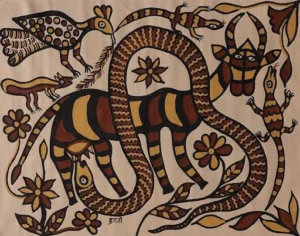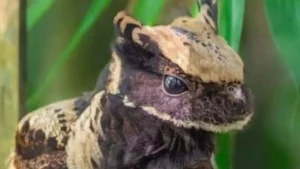UPSC GS 1
Rani Channamma
- News: Karnataka State Guarantee Implementation Authority vice-chairperson Pushpa Amarnath has remembered the contribution of Kittur Rani Channamma for standing up against British colonisation two centuries ago.

- About Kittur Rani Channamma:
-
- Kittur Rani Channamma was born in Kakati, a small village in the present-day Belagavi district of Karnataka.
- She became the queen of Kitturu after marrying Raja Mallasarja from the Desai family.
- Following Mallasarja’s death in 1816, their eldest son, Shivalingarudra Sarja, ascended the throne.
- In 1824, Shivalingarudra adopted a child named Shivalingappa as his successor before his own death.
- However, the British East India Company refused to acknowledge Shivalingappa as the rightful heir due to their implementation of the ‘doctrine of lapse.’
-
- Key Facts about the Kittur Rebellion:
-
- In October 1824, British official John Thackery initiated an attack on Kittur.
- In this initial conflict, the British forces suffered significant losses, with the Collector and political agent St. John Thackeray being killed by Kittur forces.
- Two British officers, Sir Walter Elliot and Mr. Stevenson, were captured and held as hostages during the battle.
- Despite this, the British army later launched a renewed assault on Kittur Fort, ultimately capturing it.
- Rani Channamma and her family were imprisoned in Bailhongal Fort, where she passed away in 1829.
-
Sambhar Lake
- News: Over 40 migratory birds, belonging to two to three different species, have been found dead around Sambhar Lake in Jaipur district, prompting concerns among the officials.
- Definition:
-
- Sambhar Lake is the largest saltwater lake in India.
- It is located in Rajasthan, spread across the Nagaur and Jaipur districts.
- The lake has an elliptical shape, stretching 35.5 kilometers in length, with its width ranging between 3 to 11 kilometers.
- Encompassing over 200 square kilometers, the lake is encircled by the Aravalli Hills.
-
- Hydrology: Sambhar Lake is fed by two major seasonal streams, the Mendha and Runpangarh, along with several smaller rivulets and surface runoff.

- Ramsar Status: In 1990, Sambhar Lake was recognized as a Ramsar site, highlighting its ecological importance.
- Avian Visitors:
-
-
- The lake serves as a significant wintering ground for migratory birds, especially flamingoes.
- Both the lesser flamingo (Phoeniconaias minor) and greater flamingo (Phoenicopterus roseus) are frequently sighted here, making it a critical habitat outside the Rann of Kachchh.
- Other notable bird species visiting the lake include pelicans, common shelduck, redshank, common sandpiper, black-winged stilt, Kentish plover, ringed plover, ruff, and the sociable lapwing.
-
- Salt Production: The lake produces approximately 2,10,000 tonnes of salt annually, contributing significantly to Rajasthan’s position as one of India’s top three salt-producing states.
Read also: BRICS Plus: Global Influence and Economic Collaboration | UPSC
Sohrai Painting
- News: At the BRICS Summit, PM Narendra Modi presented a beautiful Sohrai painting from Jharkhand to Russian President Vladimir Putin.
- Definition:
-
- Sohrai painting is a traditional indigenous mural art form.
- The term ‘Sohrai’ originates from the word soro, meaning ‘to drive with a stick.’
- The origins of this art form trace back to the Meso-Chalcolithic period, approximately 9000-5000 BC.
- Rock paintings discovered at the Isko rock shelter in the Barkagaon area of Hazaribagh closely resemble traditional Sohrai paintings.
-

- Theme and Inspiration:
-
- The themes often revolve around elements of nature, such as forests, rivers, animals, and other natural components of the universe.
- This art form reflects a deep connection between the indigenous communities and their environment.
-
- Technique and Materials:
-
- Sohrai paintings are primarily created by tribal (Adivasi) women using natural substances like charcoal, clay, and soil.
- The earliest examples of Sohrai art were in the form of cave paintings, showing its ancient roots.
-
- Practice and Geography:
-
- The art is practiced by indigenous communities, particularly in Jharkhand, Bihar, Odisha, and West Bengal.
- Tribes such as the Kurmi, Santal, Munda, Oraon, Agaria, and Ghatwal are known for preserving this artistic tradition.
- The Hazaribagh region of Jharkhand has received the Geographical Indication (GI) tag for Sohrai paintings.
-
- Artistic Style:
-
- Sohrai paintings are known for their vibrant colors, intricate patterns, and symbolic motifs, which make them visually distinct.
-
- Cultural Significance:
-
- The Sohrai festival is celebrated annually, coinciding with the harvest season and the onset of winter, further emphasizing the cultural significance of this art form.
-
UPSC GS 3
Great Eared Nightjar
- News: The Great Eared Nightjar(Lyncornis macrotis) has become a fascination for nature lovers and bird enthusiasts alike, not only for their unique appearance but also strange behavior.
- Definition:
-
- The Great Eared Nightjar, scientifically identified as Lyncornis macrotis, resides in the dense forests of Southeast Asia.
- Its range covers countries such as Thailand, India, and the Malay Peninsula.
- This bird stands out for its dragon-like appearance and nocturnal lifestyle.
-

- Features:
-
- The Great Eared Nightjar’s distinctive appearance often draws comparisons to mythical dragons, particularly when it perches.
- It has large, forward-facing eyes set on a prominent head, giving it a striking visual impact.
- Its feather pattern, with a blend of brown, black, and gray shades, provides excellent camouflage within its natural environment.
- Tufted feathers around the head resemble “ears,” enhancing its mythical appearance and contributing to its unique charm.
- The species possesses long, pointed wings, and its feathers are designed for silent flight, helping it sneak up on prey and evade threats with minimal noise.
-
- Distribution:
-
- This bird thrives in dense forests, woodlands, and mangrove regions across Southeast Asia, including parts of India, Sri Lanka, the Philippines, and Indonesia.
- It prefers to rest on the ground or low tree branches, maximizing its natural camouflage.
-
- Diet:
-
- The Great Eared Nightjar primarily feeds on insects such as moths, beetles, and other nocturnal species.
- Its wide mouth is highly adapted for catching prey mid-flight with precision.
-
- Breeding:
-
- Unlike many birds, the Great Eared Nightjar lays its eggs directly on the ground rather than constructing nests in trees.
-
- Conservation Status and Threats:
-
- The species is currently listed as “Least Concern” by the International Union for Conservation of Nature (IUCN).
- However, habitat destruction caused by deforestation and human activities poses a growing threat to its future, despite its presently stable population.
-
Coral Triangle
- News: As per a report released at the 16th Conference of Parties (COP16), fossil fuel exploration is threatening the Coral Triangle, one of the most biodiverse marine areas in the world.
- About the Coral Triangle:
-
- Known as the “Amazon of the Seas,” the Coral Triangle is a vast marine region spanning over 10 million square kilometers.
- It covers parts of Indonesia, Malaysia, Papua New Guinea, Singapore, the Philippines, Timor-Leste, and the Solomon Islands.
-

- Significance:
-
- This region is home to 76 percent of the world’s coral species, making it one of the most biodiverse marine ecosystems on the planet.
- It sustains the livelihoods of more than 120 million people who depend on its marine resources.
-
- Threats:
-
- The Coral Triangle faces serious threats from unsustainable fishing practices, pollution due to coastal development, and coral bleaching triggered by climate change.
-
- What Are Corals?
-
- Corals are marine animals that attach themselves permanently to the seabed, making them sessile.
- They share a symbiotic relationship with microscopic algae called zooxanthellae, which live inside the coral tissues.
- Zooxanthellae perform photosynthesis, supplying food and nutrients to the coral, essential for their survival.
- Corals use small tentacle-like structures to catch food particles from the water and direct them into their mouths.
- Each coral organism, known as a polyp, lives in a colony composed of hundreds or thousands of genetically identical polyps.
-
Asola Bhatti Wildlife Sanctuary
- News: The Delhi High Court recently directed local authorities to shift all the monkeys of the Capital to the Asola Bhatti Wildlife Sanctuary on priority.
- Definition:
-
- Asola Bhatti Wildlife Sanctuary lies on the southern boundary of Delhi and the northern edge of Haryana, covering sections of the Aravalli Hills.
- It spans an area of 32 square kilometers and serves as the only protected region showcasing the northeastern outliers of the ancient Aravalli hill range.
-
- Climate: The sanctuary experiences a climate with extreme seasonal variations, featuring scorching summers and very cold winters.
- Vegetation: The plant life is primarily made up of open-canopy, thorny scrub vegetation, with xerophytic adaptations like thorns and leaves that are waxy, succulent, or tomentose to minimize water loss.
- Flora:
-
- Key tree species include Dhau (Anogeissus pendula), Kumtha (Senegalia senegal), and Palash (Butea monosperma), with grasslands thriving on slopes and open spaces.
- Degraded sections are dominated by Prosopis juliflora and invasive species like Lantana camara and Parthenium hysterophorus.
-
- Fauna:
-
- The sanctuary hosts 25 mammal species, such as leopards and striped hyenas, and is home to 250 bird species, including endangered and vulnerable ones.
- It shelters 28 species of raptors, with 14 of them protected under the Wildlife Protection Act of India.
- Other fauna include 24 reptile species, 86 butterfly species, and 15 species of dragonflies.
- Mammals like golden jackals, Indian crested porcupines, jungle cats, civets, mongooses, snakes, and monitor lizards are commonly found.
- Noteworthy birds include the rare red-headed vulture, black eagle, and northern goshawk.
-
Nature Conservation Index 2024
- News: With a score of 45.5 out of 100, India ranked 176 out of 180 countries in terms of natural environment protection, according to the Nature Conservation Index.
- About the Nature Conservation Index (NCI):
-
- The Nature Conservation Index is developed by the Goldman Sonnenfeldt School of Sustainability and Climate Change at Ben-Gurion University of the Negev.
- It is a data-driven framework designed to evaluate how well countries are balancing conservation efforts with developmental goals.
- The NCI serves as a tool for governments, researchers, and organizations to identify key challenges and improve conservation policies to ensure long-term biodiversity protection.
-

- Purpose:
-
- The index offers insights to help countries align development with sustainable environmental practices.
- It aims to promote better governance, conservation strategies, and future planning for natural resource management.
-
- Pillars of Assessment:
-
- Management of protected areas
- Mitigation of biodiversity threats
- Governance structures for conservation efforts
- Future trends in managing natural resources
-
- Highlights:
-
- India was placed at the bottom of the rankings due to issues such as poor land management and escalating threats to biodiversity.
- The report highlighted habitat loss and fragmentation as major challenges, driven by agricultural expansion, urbanization, and infrastructure development.
- Climate change was identified as an additional risk compounding these challenges.
-
- Top Performers:
-
- The highest-ranking countries in the inaugural edition of the index were Luxembourg, Estonia, and Denmark.
- Other countries, including Zimbabwe and Costa Rica, also secured spots in the top 10, reflecting their strong conservation efforts.
-
Read also: Passive Euthanasia in India: Legal and Ethical Perspectives | UPSC
DF-26 (Dong Feng-26)
- News: In October 2024, new satellite images revealed a significant increase in Chinese production of launchers for DF-26 ballistic missiles, indicating a considerable strengthening of China’s strategic arsenal.
- About:
-
- The DF-26 (Dong Feng-26) is an intermediate-range ballistic missile (IRBM) developed by China.
- It is designed to engage both land-based targets and maritime objectives with precision.
-

- Features:
-
- Dimensions: The missile is 14 meters long with a diameter of 1.4 meters.
- Launch Weight: It weighs approximately 20,000 kilograms at launch.
- Propulsion: The DF-26 uses a two-stage solid propellant system.
- Range: It can strike targets within a range of 3,000 to 4,000 kilometers (1,860 to 2,485 miles).
- Modular Design: The missile’s launch system supports a variety of warheads, including two types of nuclear warheads and several conventional ones.
- Guidance Systems: Equipped with advanced guidance technologies, the missile can adjust its flight path mid-course, enhancing its maneuverability and precision.
-
- Variants: The DF-26 has a specialized anti-ship variant known as the DF-26B, which is engineered to target naval vessels, including aircraft carriers.
Bordoibam-Bilmukh Bird Sanctuary
- News: Assam’s Bordoibam-Bilmukh Bird Sanctuary, once a haven for birdlife, is now experiencing a severe decline in avian diversity, with numbers dropping over 70%.
- Bordoibam-Bilmukh Bird Sanctuary:
-
- Located on the border between Dhemaji and Lakhimpur districts in Assam, this sanctuary is a small yet ecologically significant wetland.
- It spans approximately 11.25 square kilometers.
- In 1996, the Assam government officially designated the area as a wildlife sanctuary to protect its biodiversity.
- The sanctuary was once part of the River Subansiri’s course, but the river now flows around 7 kilometers away from the wetland.
-
- Climate: The region experiences a moist tropical climate with an average annual rainfall of about 2,000 mm.
- Vegetation: The sanctuary’s vegetation consists of flooded valley grasslands and wetlands, creating a rich habitat for bird species.
- Birdlife:
-
- It attracts numerous migratory waterfowl during the winter months.
- The sanctuary is home to several globally threatened bird species, such as the Spot-billed Pelican (Pelecanus philippensis) and the Lesser Adjutant (Leptoptilos javanicus), which can be observed throughout the year.
-

